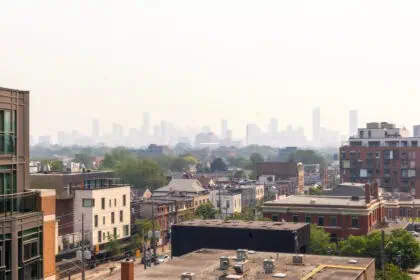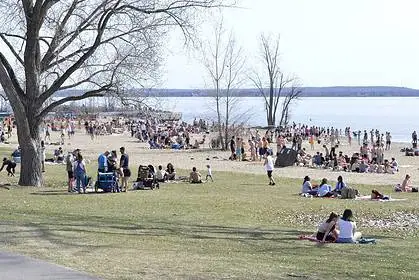
A thunderstorm like no other in modern Edmonton history
Thursday night, May 29, 2025, Edmonton was swept by an exceptionally violent thunderstorm that delivered wind gusts up to 129 km/h (80 mph)—the second-strongest ever officially measured in the city’s records, according to Environment and Climate Change Canada (ECCC). This event marked a nearly unprecedented meteorological milestone, falling just below the all-time record of 146 km/h (91 mph) from October 1, 1965.
The storm system, born from a strong low-pressure trough and an advancing cold front, surged across central Alberta with startling speed and intensity. The meteorological pattern behind it is not unusual during Alberta’s summer storm season, but the ferocity of this episode caught many off guard.
Emergency alerts and airport disruption during the storm
In response to the emerging threat, ECCC issued a rare “broadcast intrusive” alert, typically reserved for the most dangerous weather phenomena. The Edmonton International Airport was struck around 7:15 p.m. local time, forcing emergency measures, including the closure of departure ramps and the evacuation of outdoor areas to protect passengers and staff from flying debris.
Four incoming flights were redirected to Calgary, and although there was a brief ground halt, airport operations resumed within an hour. Erin Isfeld, communications manager for the airport, emphasized the rarity of such an event, stating: “We haven’t seen winds like that here in 60 years.”
Widespread destruction: trees downed, property damaged
Across Edmonton, Brookside, Sherwood Park, and Fort Saskatchewan, the wind wreaked havoc on both urban and suburban neighbourhoods. Trees were snapped or uprooted, fences were smashed, and cars were crushed under heavy limbs.
Kolton Canning, an arborist with Trusty Tree Services, reported overwhelming demand as his teams worked around the clock to clear a massive backlog of calls. Among the debris were towering 21-metre pines that had toppled onto homes and vehicles.
Power outages and safety warnings
Epcor, the local utility provider, noted four separate outages affecting 37 customers but managed to restore power before midnight. The utility reminded residents to stay at least 10 metres away from downed lines and to immediately report any dangerous situations to 911 or Epcor crews, who are trained and equipped to manage such hazards safely.
Climate signals behind the storm
Alysa Pederson, meteorologist with ECCC, pointed to the broader climate change context, stating that Alberta, and northern regions in particular, are experiencing increased frequency and severity of extreme weather events. She emphasized that warmer air can retain more moisture, resulting in stronger thunderstorms and more volatile atmospheric dynamics.
This Edmonton storm stands as a stark meteorological anomaly—a rare convergence of thermodynamic instability, wind shear, and climatic intensification, culminating in what may go down as one of the most violent wind events in the city’s modern era.










